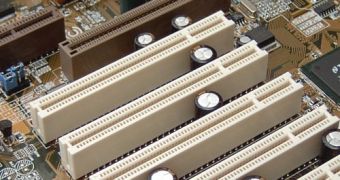The accelerated graphics port, better known as AGP, is slowly but surely seeing the last days of its existence. For those who are not in the know, the AGP is a hardware standard that has been used as the primary video graphics cards interface, since 1997 (when it was created and released by Intel) until 2004. Year 2004 marked the beginning of the end for the AGP, as motherboard manufacturers were beginning to roll out mobos based on today's current graphics interface, the PCI Express.
Apparently, the number of users, as well as of products that employ the AGP interface, continues to be considerably large. Still, these AGP-based graphics cards are pretty hard to spot these days, unless you have a friend that is trying to get rid of his old desktop computer and is willing to help you out by giving you his better AGP-based card. At this moment, users can still acquire high-end graphics cards based on the AGP interface, with the Radeon 3850. If you are among the users looking to upgrade to the AGP version of ATI's 3850, you will have to search for one at either GeCube or Sapphire. These two manufacturers still offer a Radeon 3850 with 512MB of memory.
The real fall down only began last year, when add-in board companies contributed to the AGP finally losing substantial product-mix share. On the other hand, the PCI Express became a worldwide successful standard after Eastern Europe, Russia, CIS and China stopped buying AGP cards, choosing instead to implement the new standard. Back in 1997, when the AGP was first introduced onto the market, it came with a bandwidth of 266MB/s. Later on, with the AGP 8x, users were able to benefit from a higher bandwidth speed of 2133 MB/s.
At this moment, AGP cards can be found only in upgrade markets from several countries and states in Europe and North America.

 14 DAY TRIAL //
14 DAY TRIAL //